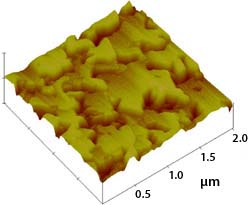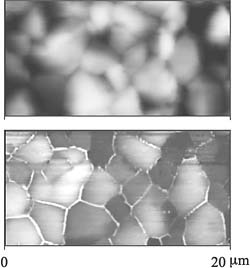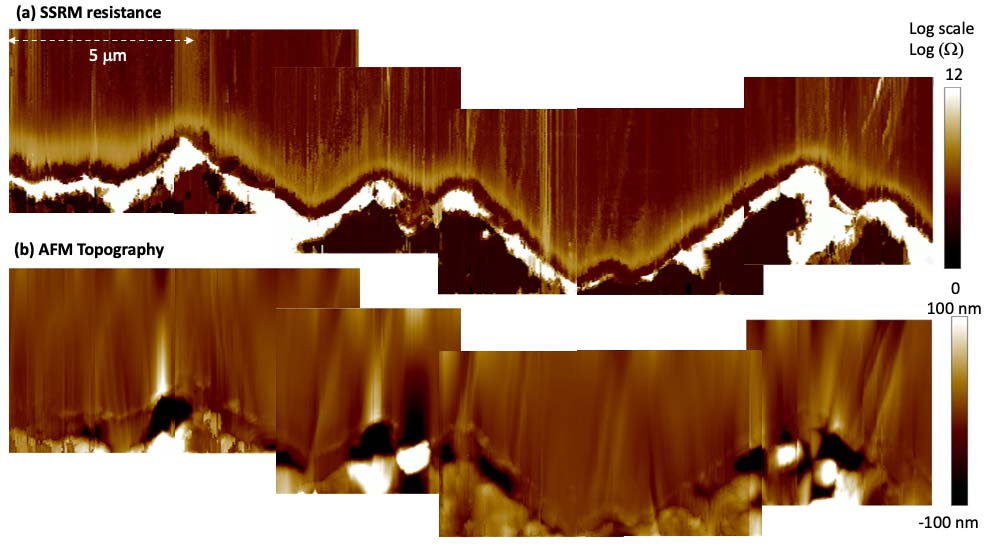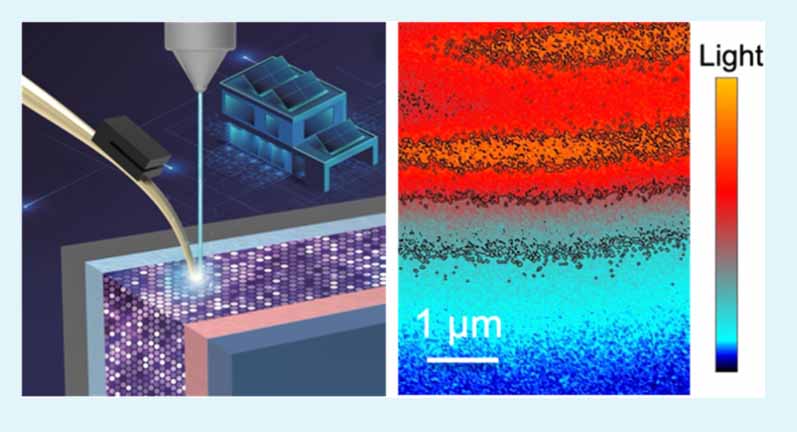Scanning Probe Microscopy
NLR uses scanning probe microscopy (SPM) tools and techniques, which scan very sharp tips extremely close to (several nanometers) or in contact with the material being analyzed.
The interaction between the tip and the sample surface is monitored and controlled to generate the output, which defines the SPM technique being used. A large number of interactions can be measured, including force, current, and capacitance. This makes SPM flexible and capable of providing information on different properties of materials down to nanoscale spatial resolutions.
Techniques
- Atomic force microscopy (AFM) can be used to measure sample topography down to the nanoscale.
- Conductive AFM (C-AFM) scans a conductive tip while applying a voltage between the sample and tip to measure current and map out sample conductivity with high spatial resolution.
- Kelvin probe force microscopy (KPFM) measures the contact potential between the tip and sample to calculate and map out the work function or electrical potential of the sample with high spatial resolution.
- Scanning capacitance microscopy (SCM) provides qualitative information on the doping of semiconductor materials using an atomic force microscope.
- Scanning tunneling microscopy (STM) uses tunneling current between the tip and sample surface to measure topography with extremely fine resolution.
- Scanning spreading resistance microscopy (SSRM) measures electrical resistivity across a broad range from conductors to insulators.
- Scanning thermal ionic microscopy (STIM) measures ionic motion.
- Piezo force microscopy (PFM) measures piezo effect.
- Magnetic force microscopy (MFM) measures magnetic structure.
- Contact resonance and force volume (CR-FV) measures mechanical properties.
- Scanning electrochemical microscopy (SECM) measures electrochemical reactions.
- Scanning microwave impedance microscopy (SMIM) simultaneously measures conductance and capacitance.
Tools

Three-dimensional AFM image of gallium phosphide grown on a silicon substrate showing atomic-scale terraces and step ledges. AFM produces real 3D representations of sample surface which can be rotated to reveal morphological and topographical features.

AFM (top) and C-AFM (bottom) images of a cadmium telluride film showing enhanced conductivity at grain boundaries.

SSRM (top) and corresponding AFM (bottom) images showing significant increases in electrical resistance across a degraded interface between a silver grid finger and silicon solar cell.

Probing spatial distribution of minority carrier transport in photovoltaic materials by dual probe of e-beam excitation and near-field scanning optical microscopy (NSOM)-probe light collection.
Contact
Share
Last Updated Dec. 6, 2025
